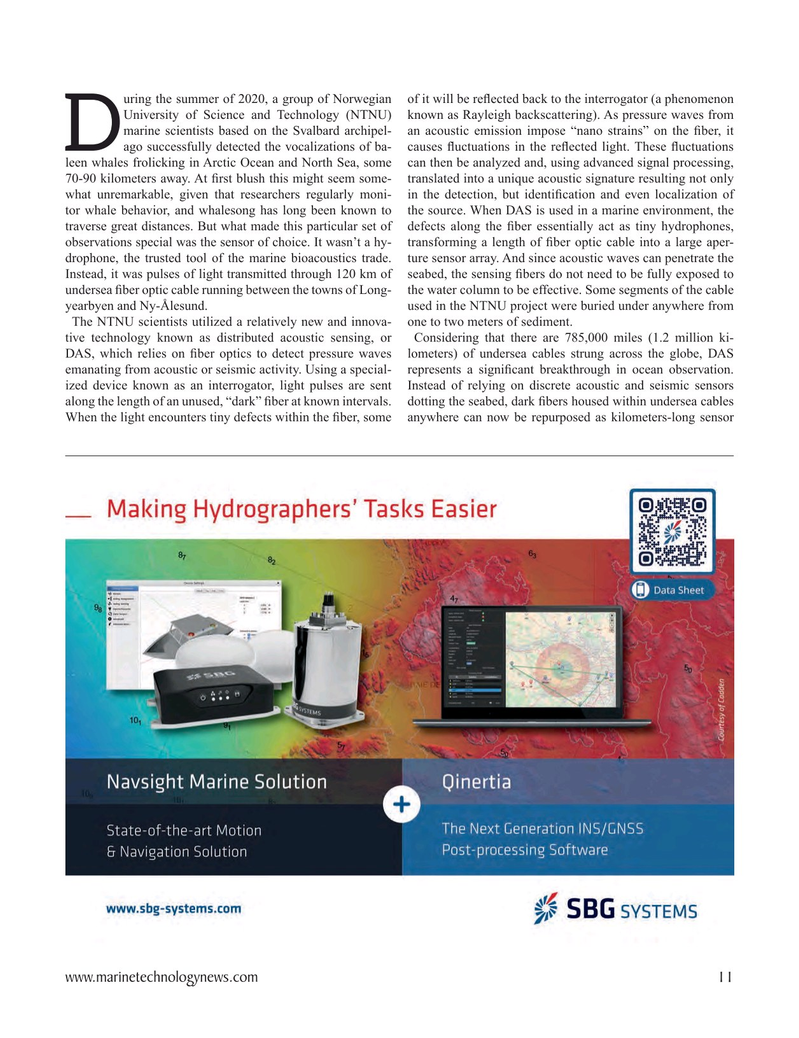
Page 11: of Marine Technology Magazine (January 2023)
Read this page in Pdf, Flash or Html5 edition of January 2023 Marine Technology Magazine
uring the summer of 2020, a group of Norwegian of it will be re? ected back to the interrogator (a phenomenon
University of Science and Technology (NTNU) known as Rayleigh backscattering). As pressure waves from marine scientists based on the Svalbard archipel- an acoustic emission impose “nano strains” on the ? ber, it
D ago successfully detected the vocalizations of ba- causes ? uctuations in the re? ected light. These ? uctuations leen whales frolicking in Arctic Ocean and North Sea, some can then be analyzed and, using advanced signal processing, 70-90 kilometers away. At ? rst blush this might seem some- translated into a unique acoustic signature resulting not only what unremarkable, given that researchers regularly moni- in the detection, but identi? cation and even localization of tor whale behavior, and whalesong has long been known to the source. When DAS is used in a marine environment, the traverse great distances. But what made this particular set of defects along the ? ber essentially act as tiny hydrophones, observations special was the sensor of choice. It wasn’t a hy- transforming a length of ? ber optic cable into a large aper- drophone, the trusted tool of the marine bioacoustics trade. ture sensor array. And since acoustic waves can penetrate the
Instead, it was pulses of light transmitted through 120 km of seabed, the sensing ? bers do not need to be fully exposed to undersea ? ber optic cable running between the towns of Long- the water column to be effective. Some segments of the cable yearbyen and Ny-Ålesund. used in the NTNU project were buried under anywhere from
The NTNU scientists utilized a relatively new and innova- one to two meters of sediment.
tive technology known as distributed acoustic sensing, or Considering that there are 785,000 miles (1.2 million ki-
DAS, which relies on ? ber optics to detect pressure waves lometers) of undersea cables strung across the globe, DAS emanating from acoustic or seismic activity. Using a special- represents a signi? cant breakthrough in ocean observation. ized device known as an interrogator, light pulses are sent Instead of relying on discrete acoustic and seismic sensors along the length of an unused, “dark” ? ber at known intervals. dotting the seabed, dark ? bers housed within undersea cables
When the light encounters tiny defects within the ? ber, some anywhere can now be repurposed as kilometers-long sensor www.marinetechnologynews.com 11
MTR #1 (1-17).indd 11 1/22/2023 8:32:19 PM

 10
10

 12
12
